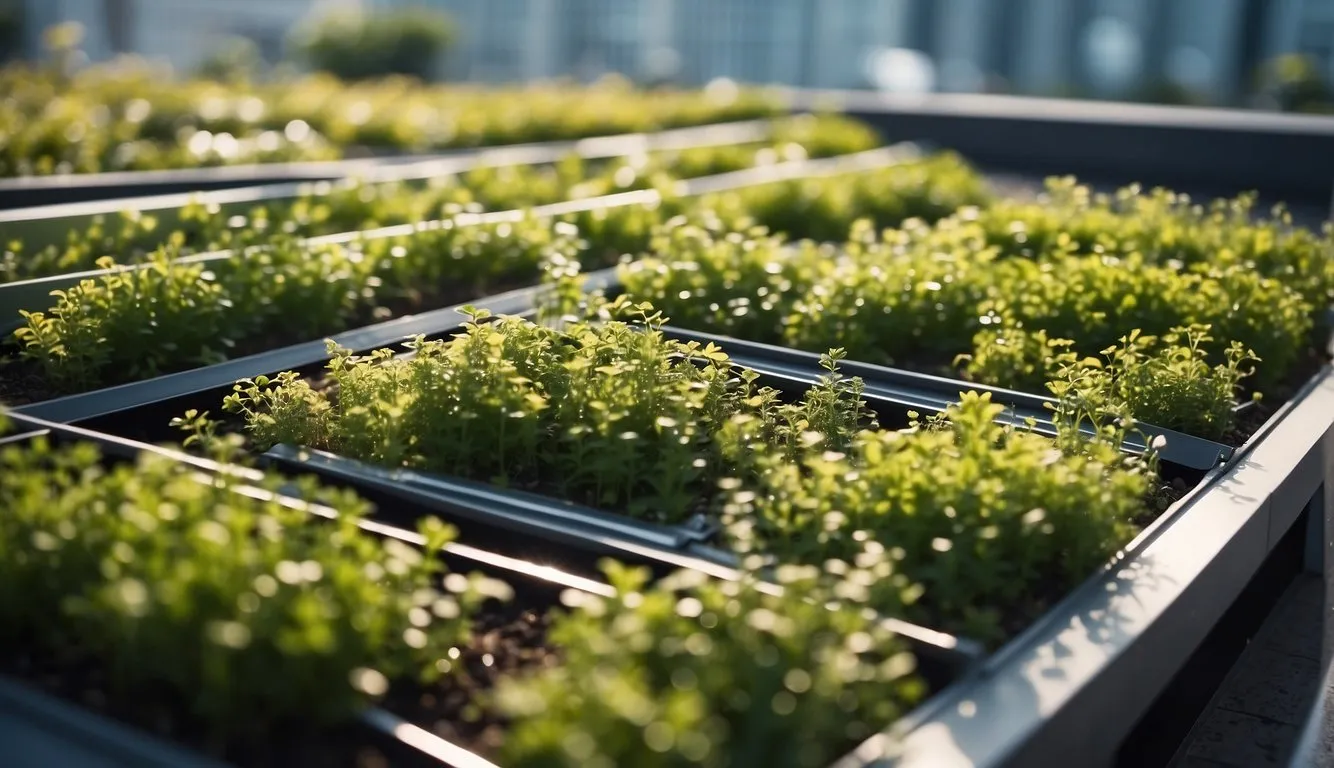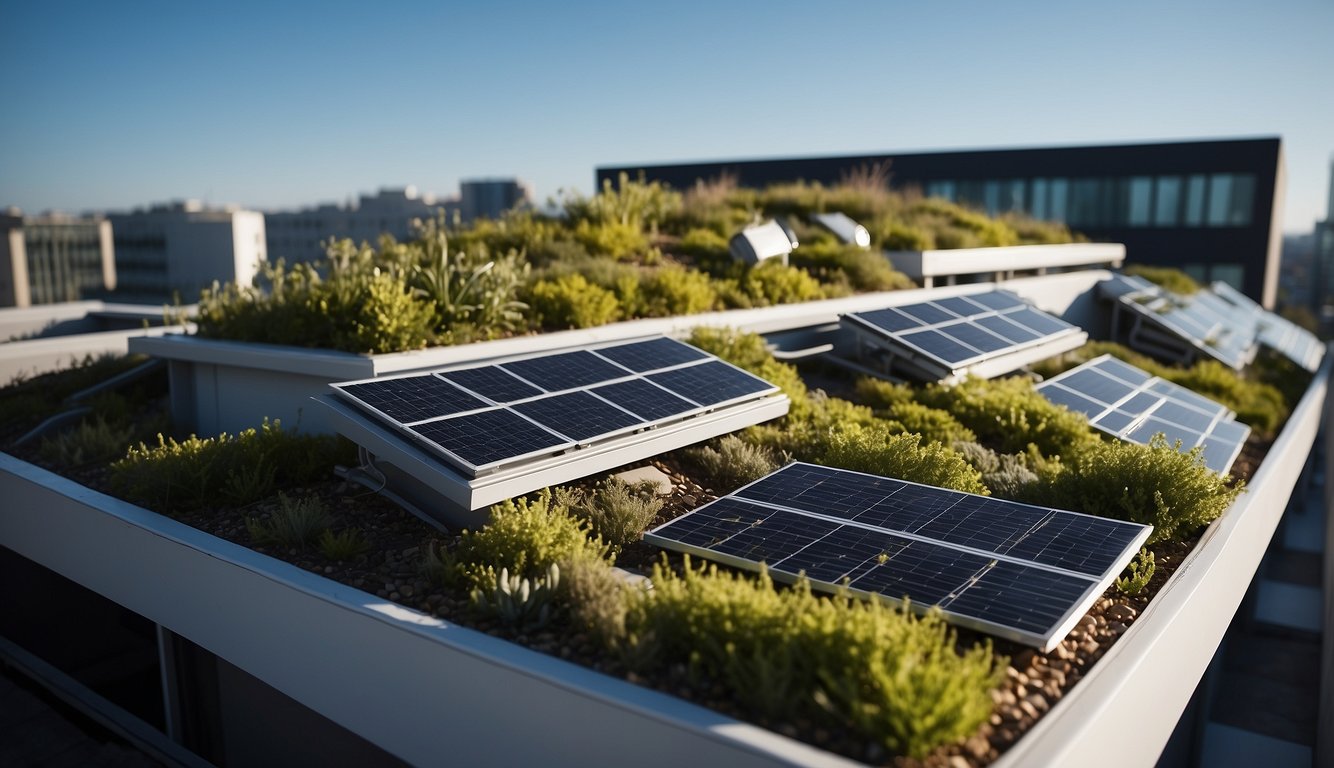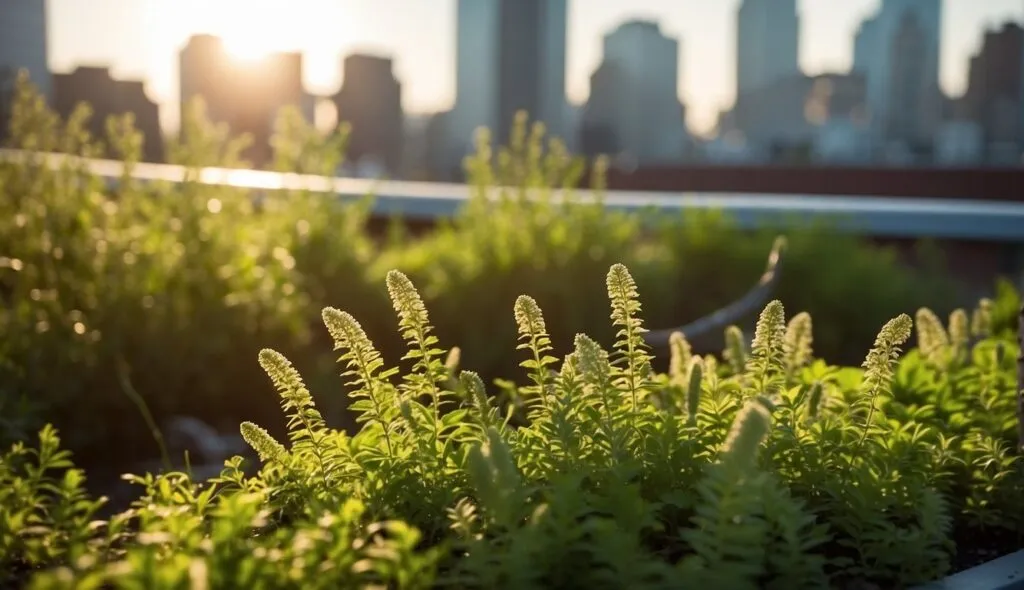Green roofs are an innovative technology that is transforming the way we think about urban sustainability. By installing vegetation on rooftops, green roofs provide a wide range of benefits, including improved energy efficiency, reduced urban heat island effect, and increased biodiversity. In this article, we will explore the fundamentals of green roofs, their benefits, design and installation, maintenance and challenges, and frequently asked questions.

Green roofs have been around for centuries, but recent advances in technology have made them more efficient and cost-effective. Today, green roofs are being used on buildings of all sizes, from small residential homes to large commercial structures. They are particularly beneficial in urban areas, where green space is limited and the demand for energy-efficient buildings is high.
Installing a green roof involves several key steps, including selecting the right plants, designing the drainage system, and ensuring proper maintenance. While green roofs offer many benefits, they also present some challenges, such as increased weight load on the roof and the potential for leaks. By understanding the fundamentals of green roofs and their design and installation, building owners can create sustainable and eco-friendly buildings that benefit both the environment and their bottom line.
Table of Contents
Key Takeaways
- Green roofs provide a wide range of benefits, including improved energy efficiency and increased biodiversity.
- Design and installation of green roofs involves selecting the right plants, designing the drainage system, and ensuring proper maintenance.
- While green roofs present some challenges, such as increased weight load on the roof and the potential for leaks, they can create sustainable and eco-friendly buildings that benefit both the environment and the bottom line.
Green Roof Fundamentals
As we explore the world of green roof technology, it is important to understand the fundamentals of this innovative approach to building design. Green roofs offer a wide range of benefits, including reducing energy consumption, improving air quality, and mitigating the urban heat island effect. In this section, we will explore the key components and types of green roofs.
Types of Green Roofs
There are three main types of green roofs: extensive, intensive, and semi-intensive. Extensive green roofs are the most common, as they are lightweight and require minimal maintenance. These roofs typically have a shallow growing medium and support hardy, drought-tolerant vegetation such as sedum and grasses. Intensive green roofs, on the other hand, have a deeper growing medium and can support a wider variety of vegetation, including shrubs and even trees. These roofs require more maintenance and are often used for public spaces such as parks or gardens. Semi-intensive green roofs fall somewhere in between, with a medium-depth growing medium and a mix of vegetation types.
Key Components
Regardless of the type of green roof, there are a few key components that are essential to their success. These include:
Drainage layer: This layer allows excess water to drain away from the growing medium, preventing waterlogging and ensuring that the roots of the vegetation do not rot.
Growing medium: The growing medium is the soil-like substance that supports the vegetation. It must be lightweight and well-draining, while still providing enough nutrients for the plants to thrive.
Vegetation: The plants on a green roof are what make it “green.” The type of vegetation used will depend on the type of green roof and the local climate.
By understanding these key components and the different types of green roofs available, we can begin to appreciate the incredible potential of green roof technology.
Benefits of Green Roofs
Green roofs are gaining popularity due to their numerous benefits. They not only enhance the aesthetic appeal of a building but also provide several environmental and economic advantages. In this section, we will discuss the two main benefits of green roofs: environmental impact and economic advantages.
Environmental Impact
Green roofs have a positive impact on the environment. They help to reduce the urban heat island effect, which is caused by the absorption and re-emission of heat by buildings and pavements. Green roofs absorb and retain heat, reducing the amount of heat that is radiated back into the atmosphere. This, in turn, reduces the amount of energy required to cool buildings, resulting in lower energy bills.
Green roofs also play a significant role in stormwater management. They absorb rainwater, reducing the amount of runoff that ends up in storm drains and ultimately in rivers and oceans. By doing so, green roofs help to prevent flooding and erosion, and improve water quality.
Another environmental benefit of green roofs is that they help to improve air quality. They absorb carbon dioxide and other pollutants from the air, reducing the amount of harmful gases that are released into the atmosphere. Green roofs also provide habitat for birds, bees, and other insects, which helps to promote biodiversity in urban areas.
Economic Advantages
Green roofs offer several economic advantages. They help to reduce energy costs by providing natural insulation, reducing the need for heating in winter and cooling in summer. On average, green roofs can cut down air conditioning use by up to 75% and heating usage by 23%. This leads to substantial energy savings.
Green roofs also help to extend the lifespan of a roof. The plants and soil on a green roof protect the waterproof membrane from the harmful effects of the sun, wind, and rain, reducing the need for repairs and replacements.
Finally, green roofs can increase the value of a property. They enhance the aesthetic appeal of a building, making it more attractive to potential buyers or renters. Green roofs also provide a unique selling point, which can help to differentiate a property from others on the market.
In conclusion, green roofs offer numerous benefits, both environmental and economic. They help to reduce the urban heat island effect, manage stormwater, improve air quality, reduce energy costs, extend the lifespan of a roof, and increase the value of a property.
Design and Installation
When it comes to designing and installing a green roof, there are several key considerations to keep in mind. At our company, we take a holistic approach to the process, carefully considering everything from the structural requirements to the waterproofing and drainage systems.
Structural Considerations
One of the first things we consider when designing a green roof is the structure of the building itself. Green roofs can be quite heavy, so it’s important to ensure that the building is structurally sound enough to support the added weight. In some cases, additional structural support may be needed.
Flat roofs are particularly well-suited for green roof installations, as they provide a level surface on which to build the green roof. However, it’s important to note that not all flat roofs are created equal. Some may require additional reinforcement to support the weight of the green roof.
Waterproofing and Drainage
Another key consideration when designing a green roof is waterproofing and drainage. A waterproof membrane is essential to prevent water from seeping into the building. There are several types of waterproofing membranes available, including rubber, asphalt, and PVC.
Drainage systems are also critical to the success of a green roof. Without proper drainage, excess water can accumulate on the roof, leading to leaks and other issues. At our company, we use a combination of drainage mats and layers of gravel to ensure that water is properly channeled away from the roof.
Overall, designing and installing a green roof requires careful consideration of a variety of factors. At our company, we have the expertise and experience needed to ensure that every green roof we install is structurally sound, waterproof, and properly drained.
Maintenance and Challenges
Caring for Green Roofs
Maintaining a green roof is crucial to ensure its longevity and health. We recommend regular inspections, at least twice a year, to check for any damage, debris, or plant growth issues. During these inspections, we recommend checking for any leaks, clogs, or damage to the irrigation system.
In addition to regular inspections, we suggest a maintenance plan that includes fertilization, pruning, and weed control. The maintenance plan should be tailored to the specific plant species on the green roof, as different species have varying requirements. We recommend using organic fertilizers and avoiding chemical pesticides to minimize harm to the environment.
Common Issues
Green roofs can face several challenges, including extreme weather conditions, pests, and poor drainage. In areas with high rainfall, proper drainage is essential to prevent water buildup and damage to the roof structure. Installing a high-quality drainage system is crucial to the success of a green roof.
Another common issue is pest infestations, which can damage the plants and the roof structure. We recommend using natural pest control methods, such as introducing beneficial insects or using organic pesticides.
Finally, plant selection is critical to the success of a green roof. Choosing plant species that are well-suited to the local climate and environment can help minimize maintenance needs and increase the longevity of the roof. We suggest consulting with a local expert to determine the best plant species for your green roof.
In summary, maintaining a green roof requires regular inspections, a tailored maintenance plan, and proper plant selection. With proper care, a green roof can provide numerous benefits, including energy savings, improved air quality, and increased biodiversity.
Conclusion
Innovative green roof technology has come a long way in recent years. We have seen a significant increase in the number of green roofs being installed in cities around the world due to the numerous benefits they provide. These benefits include improved air quality, reduced energy consumption, and increased biodiversity.
Not only do green roofs provide environmental benefits, but they also have a positive impact on society. Green roofs can improve the aesthetic appeal of buildings and provide a space for urban agriculture, which can help to address food insecurity in cities.
The integration of green roofs into building design has become more common, and architects and engineers are finding innovative ways to incorporate them into their designs. New technologies, such as modular systems and smart irrigation, are making it easier to install and maintain green roofs.
Overall, we believe that innovative green roof technology will continue to play an important role in sustainable urban development. As more cities become aware of the benefits of green roofs, we expect to see an increase in their adoption. We look forward to seeing what new innovations will emerge in the coming years as we continue to work towards a more sustainable future.
Frequently Asked Questions

What are the latest advancements in green roof systems?
We are constantly seeing advancements in green roof technology. Modular systems, lightweight materials, and smart irrigation are just a few examples of the latest advancements. These innovations make green roofs more efficient, cost-effective, and easier to install and maintain.
How do different types of green roof systems compare in performance?
There are three types of green roof systems: extensive, semi-intensive, and intensive. Extensive green roofs have shallow soil depths and are low maintenance, while intensive green roofs have deeper soil depths and require more maintenance. Semi-intensive green roofs are a combination of the two. The type of green roof system that is best for a particular building depends on various factors such as the building’s location, climate, and budget.
What are the benefits of implementing green roof technology in urban areas?
Green roofs provide a range of benefits to urban areas, including reducing the urban heat island effect, improving air quality, reducing stormwater runoff, and providing habitat for wildlife. Additionally, green roofs can help to reduce energy costs by providing insulation and reducing the need for air conditioning.
How can green roof systems be integrated into existing buildings?
Green roofs can be installed on existing buildings by retrofitting the roof with a waterproof membrane, drainage layer, growing medium, and vegetation. The installation process will vary depending on the type of green roof system being installed and the condition of the existing roof.
What are the cost implications of installing a green roof?
The cost of installing a green roof will depend on various factors such as the type of green roof system being installed, the size of the roof, and the condition of the existing roof. While green roofs may have a higher upfront cost compared to traditional roofs, they can provide significant long-term cost savings through reduced energy costs, extended roof lifespan, and reduced stormwater management costs.
What research supports the effectiveness of green roof technology in environmental management?
There is a growing body of research supporting the effectiveness of green roofs in environmental management. Studies have shown that green roofs can reduce the urban heat island effect, improve air quality, reduce stormwater runoff, and provide habitat for wildlife. Additionally, green roofs have been shown to provide energy savings and extended roof lifespan.


